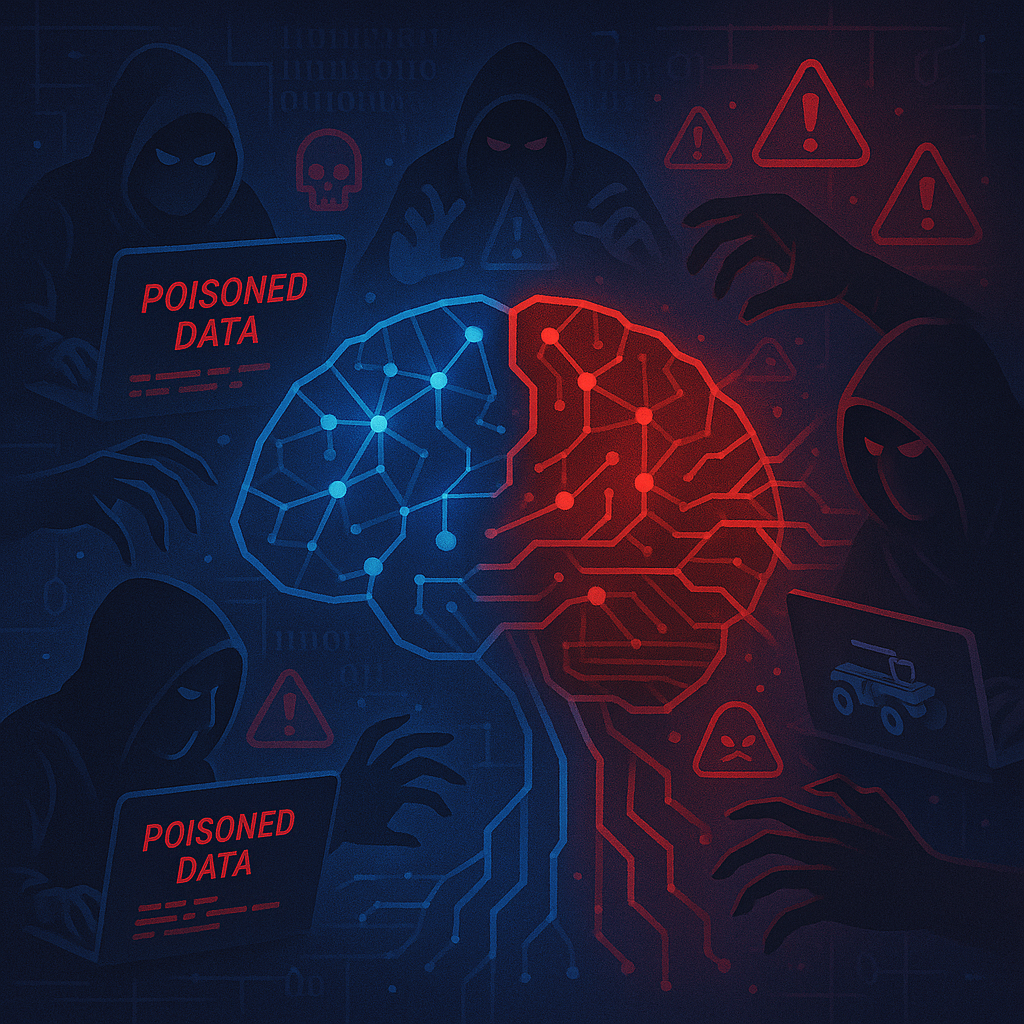AI is becoming part of our daily lives. But its quick growth brings new security risks that most people don’t expect. One big problem shaking up the AI world is data poisoning. Let’s explore what data poisoning means why it’s risky, and how to prevent it.
🤔 What Is Data Poisoning?
Data poisoning happens when someone slips fake or harmful info into the data that trains an AI system. AI models learn from huge data sets — and if someone messes with that data, the AI will make poor choices. Even a tiny bit of false data can cause major issues.
🎯 Why You Should Care About Data Poisoning
Picture a self-driving car trained on corrupted data. It might not recognize stop signs. Or an AI-powered finance app could suggest bad investments. In short, data poisoning can cause dangerous mistakes financial losses, and major security risks.
🔐 How Data Poisoning Attacks Happen
Bad actors often hide fake data in large sets of real information to make it hard to detect. After an AI trains on this data, it can:
- 🤖 Provide incorrect answers
- 🔍 Overlook key patterns
- 🧠 Learn biased or unfair behaviors
That’s why data poisoning ranks among the most hazardous cyber threats AI faces today.
🛡️ How to Guard AI Systems against Data Poisoning
Some basic yet effective measures can help safeguard AI systems:
- 🧪 Scrutinize all data before using it to train.
- 🔍 Apply anomaly detection software to spot questionable alterations.
- 🧠 Maintain data variety and balance to make the model tougher to manipulate.
- 🕵️ Keep an eye on AI performance often to detect odd behavior.
🌍 Why Data Poisoning Will Continue to Expand
Each year, AI adoption grows among businesses — giving cybercriminals more opportunities to attack. Looking ahead, data poisoning might target a range of systems, from health tools to money-related algorithms. To keep AI reliable and secure, it’s crucial to stay ahead of this danger.
